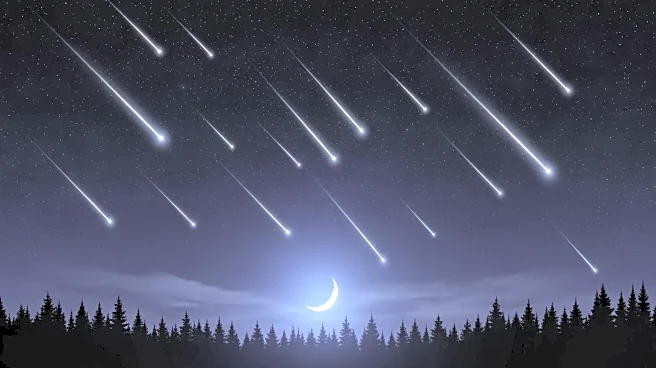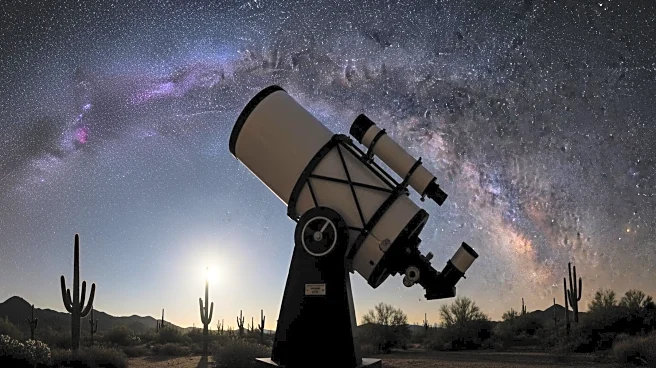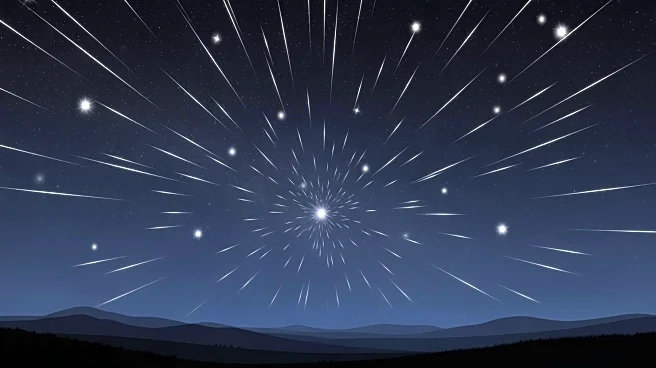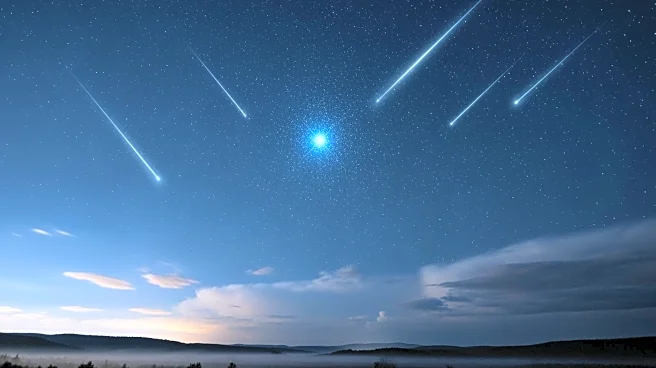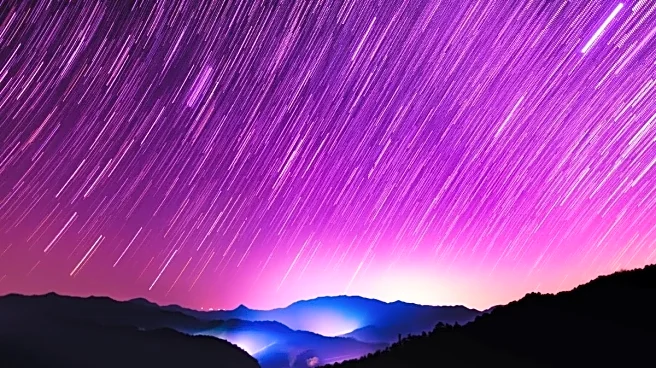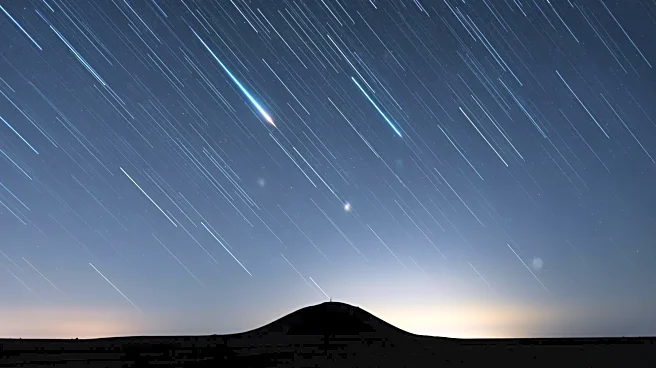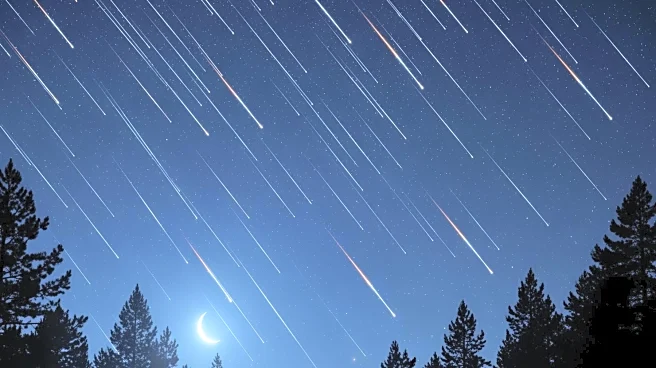What's Happening?
The Leonid meteor shower, active from November 6 to 30, is expected to peak on November 17, offering a chance to observe fast-moving, bright meteors with persistent trains. The radiant of the shower, located
in the constellation Leo, will rise to over 50° by 4 A.M. local time, providing optimal viewing conditions. The thin crescent Moon will offer minimal interference, making naked-eye observation the best method. The shower is anticipated to produce about 15 meteors per hour at its peak, with the longest trains visible 40° to 60° away from the radiant. Observers are encouraged to scan the sky to the left and right of Leo to catch the brightest meteors.
Why It's Important?
Meteor showers like the Leonids offer a unique opportunity for amateur astronomers and the general public to engage with celestial events. The visibility of bright meteors can inspire interest in astronomy and provide educational opportunities about the solar system and cosmic phenomena. The Leonid meteor shower, known for its fast-moving meteors, can also contribute to scientific research by allowing astronomers to study the composition and behavior of meteoroids as they enter Earth's atmosphere. This event highlights the importance of preserving dark skies and reducing light pollution to enhance astronomical observations.
What's Next?
Following the peak of the Leonid meteor shower, observers can continue to watch for meteors until the end of November. The shower's activity will gradually decrease, but sporadic meteors may still be visible. Astronomers and enthusiasts will likely share observations and images, contributing to a broader understanding of the shower's characteristics. The event may also prompt discussions on the impact of light pollution on astronomical observations and the need for conservation efforts to protect dark skies.


